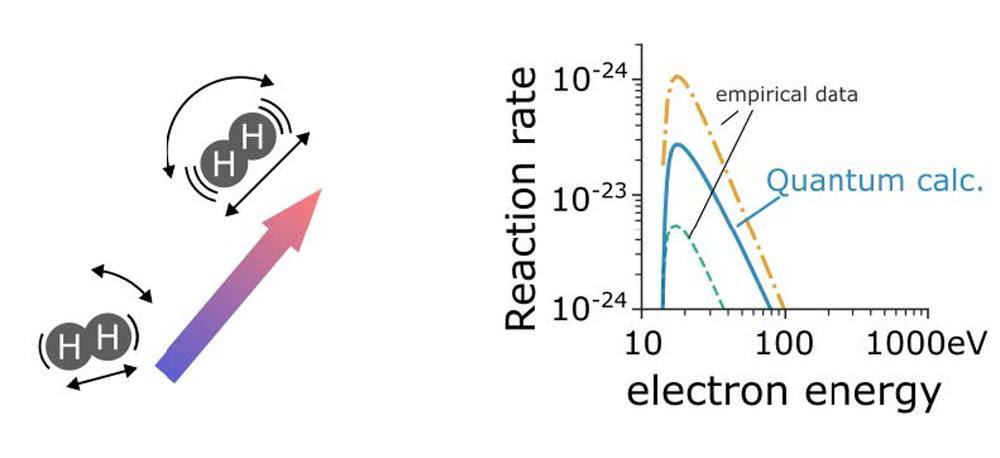Experimental validation of hydrogen molecular data for fusion
Because of complex quantum mechanical effects in molecule structure, hydrogen molecular dynamics have been difficult to observe experimentally in fusion plants. In this research, from the detailed emission spectra of hydrogen molecules observed from various experiments, including the Large Helical Device (LHD), we found that the latest theoretical calculation provides a better match to the observation than the empirical ones that are widely used. This enabled us to experimentally measure the molecule dynamics in the exhaust region of fusion plants.

In nuclear fusion power generation, the energy generated by a nuclear fusion reaction between deuterium and tritium in plasma is extracted. In order for the fusion reaction to occur efficiently, it is necessary to provide the fuel particles and exhaust the ash particles.
The fuel particles, which are deuterium and tritium, are provided in molecular form. Then, they are dissociated into an atomic form by an interaction with the plasma, ionized, heated up, and then undergo the nuclear reaction. Among them, fuel dynamics in molecular form have been difficult to observe because of the quantum mechanical effect in the energy structure of hydrogen molecules. In particular, some essential molecular data have large variations among multiple sources, and their accuracy has been unclear.
The research group have developed a so-called collisional-radiative model, which reproduces an emission spectrum from the molecular data; and have reconstructed a spectrum corresponding to each data source. The experimentally obtained spectra from radio-frequency wave heated plasma at Shinshu University and divertor plasma in the LHD will be used to validate these models. As a result, we found that the latest theoretical data developed by co-authors from Curtin University in Australia shows the best fit to the experiment.
This result may enable us to measure in more detail fueling-particle dynamics in fusion plants where extreme heat flux must be exhausted properly. Since this will overheat the wall material, it has been considered essential to utilize chemical reactions with molecules to dissipate the power. A detailed understanding of the fueling-particle dynamics will help to develop a control method.
This research was conducted by a collaboration among Dr. Fujii at Oak Ridge National Laboratory (USA), Dr. Skarlett's group at Curtin University (Australia), Prof. Sawada at Shinshu University (Japan), Dr. Goto and Dr. Kobayashi at NIFS (Japan), and Dr. Kuzmin at Kyoto University (Japan).
This research result was published in Physics of Plasmas, a journal of the American Institute of Physics, on September 1, 2024.
